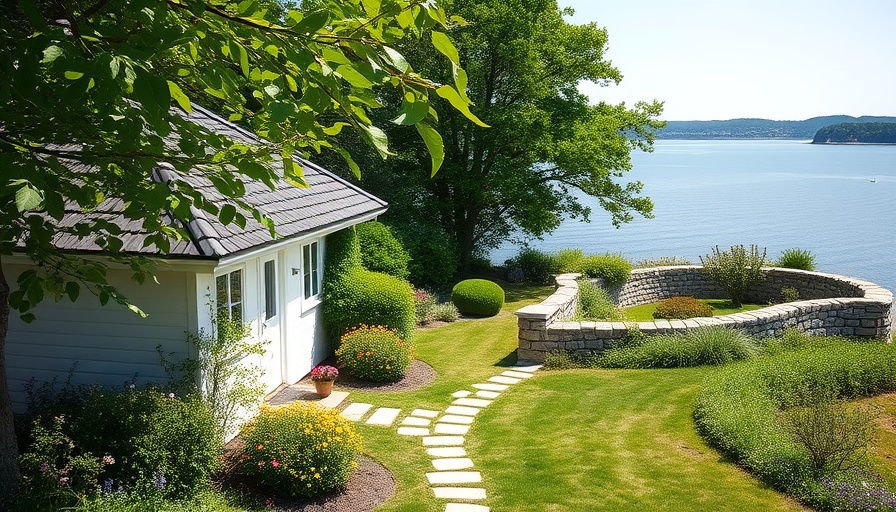
A Modern Take on Traditional Swedish Gardens
In today’s world, finding ways to harmoniously blend a garden into its natural surroundings is a skill that few can master. Annika Zetterman, a renowned Swedish garden designer, exemplifies this in her stunning work on the island of Värmdö situated in the breathtaking Stockholm Archipelago. Her designs capture not only the essence of the Swedish landscape but also our collective love for nature and outdoor living. Let’s explore how Zetterman's unique approach elevates garden design while reflecting the vibrant culture and conditions of Sweden's coast.
The Inspiration Behind the Design
With approximately 25,000 islands dotting the archipelago, Värmdö offers a unique canvas for Zetterman, who cleverly intertwines New Nordic aesthetics with practical gardening solutions. Her clients wanted a space that echoed their love for the outdoors and the surrounding landscape. Accordingly, Zetterman has a distinct ability to design gardens that are integrated with their environment, informed by the local flora and climate—making consideration of plant selection not just an aesthetic choice but a necessary one.
Navigating the Challenges of Coastal Gardening
Gardening by the sea presents its own unique challenges; Zetterman notes that while the climate is milder due to the proximity to water, it can also suffer from dry summers and strong winds. Her design philosophy revolves around understanding these elements. She positions seating areas strategically to shelter from the wind while selecting native plant species that thrive in discussed conditions, ensuring both longevity and visual appeal.
Creating a Multilayered Experience
One of the standout features of Zetterman’s garden is its multilayered design, with spaces on various levels that invite exploration and relaxation. The garden includes a pathway leading to a private beach, harmoniously connecting outdoor living and natural beauty. By incorporating granite pathways and slate paved sections, Zetterman ensures durability while retaining aesthetic beauty, reinforcing the connection with the rocky shores.
The Importance of Seasonal Interest
To ensure the garden maintains visual interest throughout the year, Zetterman expertly chooses a combination of perennials and ornamental grasses. This choice gives structure and form across all seasons—from vibrant blossoms in the summer to rustling grasses in the winter. For garden enthusiasts, understanding this principle of seasonal interest can transform not just their gardens but their entire enjoyment of their outdoor spaces.
Rethinking Outdoor Spaces: A New Mindset
Zetterman’s garden, aptly named Harmony Garden, serves not just as a space for flora, but as a family retreat. As she states, it’s a place for enjoying morning sun, observing local wildlife, or simply unwinding with a good book. This holistic approach encourages homeowners to rethink their outdoor spaces, viewing them as extensions of their lifestyles rather than mere patches of green.
Building a Relationship with Nature
Gardening goes beyond planting; it’s about establishing a relationship with nature. Annika Zetterman’s work reminds us that gardens are not just for aesthetics—they’re living spaces that provide mental and physical benefits. For homeowners looking to design their own gardens, embracing a philosophy that respects and reflects the natural world could prove invaluable.
Call to Action: Design Your Outdoor Sanctuary
Inspired by Zetterman’s approach? Consider how you can redefine your outdoor spaces. With the right design and plant selection, you too can create a sanctuary that reflects your love for the landscape, accommodates your lifestyle, and embraces the nuances of your local environment. Whether you're looking to consult a professional or dive into the DIY garden movement, the possibilities are limitless!
 Add Row
Add Row  Add
Add 




Write A Comment